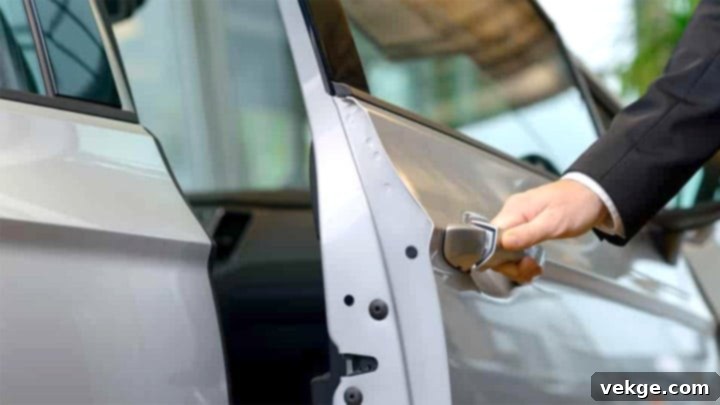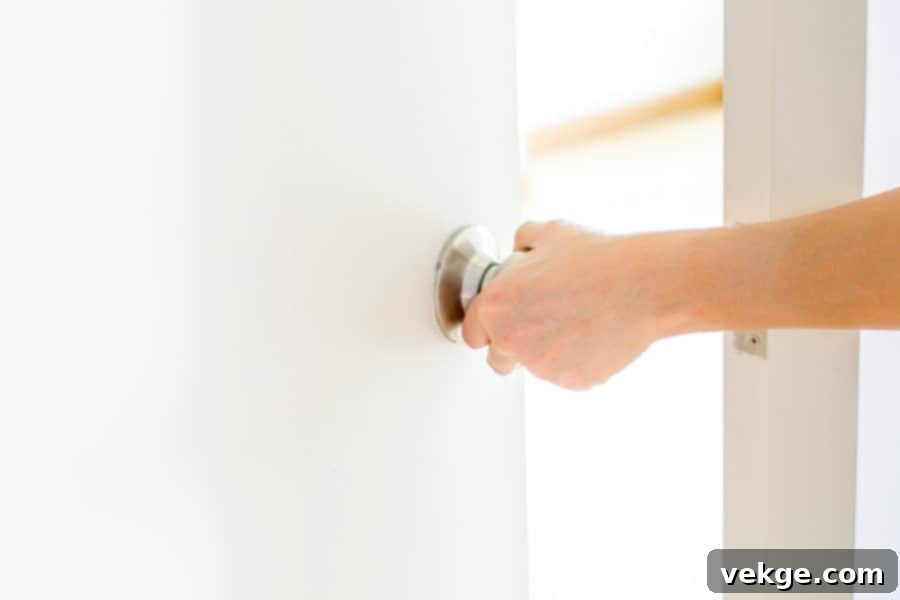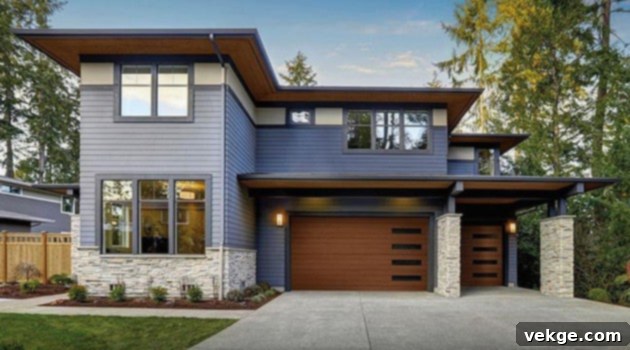Ultimate Guide to Troubleshooting Common Garage Door Problems: DIY Fixes & When to Call a Pro
Imagine this all-too-common scenario: You’re running late for work, a hot cup of coffee in one hand, your briefcase in the other. With a hopeful press of the garage door opener button, you expect the familiar hum and rise, but instead… silence. The door remains stubbornly shut, mocking your frantic attempts with an unnerving stillness. Sound familiar? This isn’t a scene from a slapstick comedy (though it might feel like one in the moment), but a common, deeply frustrating experience many of us face with our often-temperamental garage doors.
Before you resign yourself to a fate of late arrivals, frayed nerves, or the costly inconvenience of an emergency repair, consider channeling your inner detective. With a little practical know-how, a handful of basic tools, and perhaps a healthy dose of humor, you can transform from a frustrated victim into a garage door troubleshooting extraordinaire! This comprehensive guide is your essential roadmap to navigating the sometimes-confounding world of garage door woes. We’ll demystify common issues, ditch the overwhelming technical jargon, and arm you with simple, step-by-step solutions, all delivered with a sprinkle of lightheartedness to keep things engaging (because let’s face it, staring at a malfunctioning garage door isn’t exactly a barrel of laughs).
Remember, knowledge truly is power, and in this case, it’s the power to finally silence those creaking hinges, conquer that stubborn door, and restore peace and convenience to your daily routine. So, let’s roll up our sleeves, get to the bottom of these garage door mysteries, and get your door (and you!) back on track, allowing you to get back on the road – or, more accurately, into your garage!
The Garage Door Is Reluctant to Open or Close: Solving Common Malfunctions

Ah, the classic whodunit: your garage door stands frozen, refusing to budge a single inch. But fear not, intrepid detective! With a keen eye for detail and a dash of elbow grease, we’ll crack this case wide open and get your garage door moving smoothly again. Let’s examine the usual suspects behind a reluctant garage door:
Exhibit A: The Jerky Movement and Misaligned Tracks
When your garage door moves with an erratic, jerky motion, or seems to get stuck partway, this often points to a problem with its tracks. The tracks are the metal rails that guide your garage door rollers, ensuring a smooth up-and-down motion. If they’re not perfectly aligned or are bent, the rollers will struggle to move, leading to that frustrating, uneven operation.
- Inspection: Grab a level and carefully inspect both vertical and horizontal tracks. They should be perfectly parallel and plumb. Look for any visible bends, dents, or gaps between the track and the wall.
- Causes: Misalignment can occur over time due to vibrations, loose mounting hardware, or even accidental impacts.
- Adjustment: If you find a slight misalignment, you might be able to gently adjust it. Loosen the bolts that hold the track to the wall just enough to allow some movement. Carefully tap the track back into position with a rubber mallet until it’s straight and parallel to the other track. Re-tighten the bolts firmly. Remember, precision is key! Don’t go hulk-smashing the tracks, as over-adjusting can create new, more severe problems.
- When to call a pro: If the tracks are significantly bent, severely damaged, or if you’re uncomfortable making adjustments, it’s best to call a professional garage door repair technician. They have the specialized tools and expertise to perform a safe and effective track repair or replacement.
Exhibit B: The Complete Stoppage – Door Won’t Move At All
This is the ultimate cliffhanger, leaving you stranded with a car full of groceries, a pressing deadline, and a growing sense of panic. But don’t despair! Before you jump to the worst conclusions, let’s check some common, often simple culprits:
- Remote Control Battery: It might sound obvious, but a dead remote control battery is a surprisingly common reason for a non-responsive door. Try replacing the batteries or using the wall-mounted button to rule out the remote as the problem.
- Safety Sensors Blocked or Misaligned: Your garage door is equipped with photo-eye safety sensors located near the bottom of the tracks, typically about 4-6 inches off the ground. These sensors emit an infrared beam, and if anything breaks that beam while the door is closing, the door will automatically reverse or refuse to close.
- Inspection: Check both sensors. Are they clean? Clear of spiderwebs, dust, or a rogue leaf? Make sure nothing is physically blocking the beam. The indicator lights on both sensors should be steadily lit (usually one green, one amber). If a light is off or blinking, they might be misaligned.
- Alignment: Gently adjust the sensors until both indicator lights are solid. Sometimes a slight nudge is all it takes. Clean the lenses with a soft cloth.
- Sunlight Interference: Strong direct sunlight can sometimes interfere with the sensors. Try shading the sensor receiving the direct sunlight or waiting until the sun shifts.
- Power Supply Issues:
- Check the Outlet: Is the garage door opener plugged in? Has the plug come loose?
- Circuit Breaker: Check your home’s electrical panel. Has the circuit breaker for the garage or garage door opener tripped? Resetting it might solve the problem.
- Opener Motor: If the opener has power but isn’t responding, the motor itself could be faulty. Listen for any faint hums or clicks.
- Broken Garage Door Spring: If none of the above solutions work, and especially if your door feels incredibly heavy or slams shut, the culprit might be a broken spring. Garage door springs (torsion or extension) are under immense tension and are crucial for counterbalancing the door’s weight, making it easy for the opener to lift.
- Warning: A broken spring is a serious issue. Do NOT attempt to replace or adjust a garage door spring yourself. The tension stored in these springs is extremely dangerous and can cause severe injury or even death if handled incorrectly. This is unequivocally a job for a trained professional. You might see a visible gap in a torsion spring or a broken cable if you have extension springs.
- Professional Help: In this case, calling in experienced garage door repair professionals is not just the smartest move, but a critical safety measure. They have the specialized tools, training, and (most importantly) the safety gear to handle this tricky and hazardous job.
- Manual Release Mechanism: If your door is stuck closed and you need to get your car out, locate the red emergency release cord hanging from the opener trolley. Pull it firmly to disengage the door from the opener, allowing you to lift it manually. Be cautious, as the door will be very heavy without the springs assisting, especially if a spring is broken.
Remember, while some garage door mysteries can be solved with a little DIY detective work, others, especially those involving high-tension components like springs or garage door hinge replacement, absolutely require the expertise of a seasoned professional. Don’t be afraid to call in the reinforcements when the case gets too complex – your safety and sanity (and your garage door’s longevity) will thank you for it!
Strange Noises and Other Pesky Garage Door Issues

Beyond the frustrating silence of a stuck door, your garage door can develop a whole symphony of strange noises – squeaks, grinds, and bangs that are not only annoying but often indicators of underlying problems. Let’s decode these auditory clues and address other common issues.
The Squeaky Serenade: When Your Door Sounds Like a Haunted House
A high-pitched squeal or persistent grinding usually points to a lack of lubrication. Just like any moving machinery, garage door components require regular lubrication to function smoothly and quietly. Over time, dirt, dust, and old grease can accumulate, leading to friction and those irritating noises.
- Lubrication is Key: Grab your trusty silicone-based garage door lubricant or white lithium grease (avoid WD-40, as it can attract dirt and actually cause more problems in the long run). Apply it generously to the hinges, rollers (especially the bearings inside the rollers, not the wheels themselves if they are nylon), and torsion springs. Think of it as giving your door a soothing, much-needed spa treatment!
- Frequency: Lubricate your garage door at least once or twice a year, more often if you live in a dusty environment or use your garage door frequently.
- Worn-Out Rollers: If the squeaking persists even after lubrication, the culprit might be worn-out rollers. Rollers have bearings that can wear down, or their nylon exteriors can crack and chip.
- Inspection: Visually inspect the rollers. Are they wobbly? Are the bearings exposed or rusty? Is the nylon chipped or broken?
- Replacement: Worn rollers need replacement. This can be a fiddly job, as you typically replace them one by one, careful not to release the tension on the bottom rollers that are held by the bottom bracket. Sometimes, calling in a professional garage door technician is the most harmonious solution for roller replacement, ensuring they are correctly installed and aligned.
The Banging Bonanza: A Symphony of Alarming Thuds
A loud, jarring banging sound is more alarming than a squeak and usually indicates a more significant issue that requires immediate attention.
- Loose Chain or Belt: If your opener uses a chain or belt drive, a loose chain or belt can cause a rhythmic banging as it moves around or strikes the rail.
- Inspection: Observe the chain/belt. Does it sag significantly?
- Tightening: Most garage door openers have a tension adjustment screw or nut. Carefully consult your opener’s manual for specific instructions on how to tighten it. Remember, over-tightening can cause new problems, such as premature wear on the motor or stripping of gears.
- Broken Spring (Again!): Yes, that sneaky suspect keeps popping up! A broken torsion or extension spring can cause the door to slam shut with an unnerving bang, or open very quickly and unevenly.
- Extreme Caution: While replacing a spring might seem tempting for the truly adventurous DIYer, exercise extreme caution! Garage door springs are under immense tension and can cause severe injury or even death if handled incorrectly.
- Call a Pro: This is one instance where calling a professional for garage door spring repair is not just safer but absolutely essential. Do not attempt this repair yourself.
- Loose Hardware: Over time, the nuts, bolts, and screws that secure the tracks, hinges, and other components can loosen due to vibration. This can cause parts to rattle and bang against each other.
- Inspection: Go over all visible hardware and gently try to tighten any loose nuts or bolts with a wrench or socket set. Be careful not to overtighten and strip the threads.
The Grinding Groan: When Your Opener Sounds Like It’s Struggling
A low, rumbling, or grinding sound often indicates a problem within the garage door opener unit itself. This could be mechanical or electrical.
- Worn or Stripped Gears: Inside the opener motor, there are gears that drive the chain or belt. These can wear down or become stripped over time, especially if the door is unbalanced or the motor is overworked.
- Inspection: Unplug the opener. If you’re comfortable, remove the cover to visually inspect the gears. Look for missing teeth or excessive wear.
- Solution: Gear replacement can be a complex job. If the issue persists after basic checks, consulting a qualified technician for garage door opener repair is the best course of action.
- Motor Issues: The motor itself might be failing, causing it to strain and make grinding noises.
- Chain/Belt Obstruction: Sometimes, debris can get caught in the chain or belt drive, causing grinding as the motor tries to move it. Inspect the entire length of the drive for any obstructions.
Beyond the Noise: Other Garage Door Oddities
Your garage door’s repertoire of oddities extends beyond mere sonics:
- Uneven Movement: If your door travels up or down crookedly, it could be caused by a misaligned track, worn rollers, or even a broken spring (yes, that sneaky suspect again!). Another less common but serious issue could be a broken or frayed lift cable. Never attempt to adjust or repair lift cables yourself, as they are under immense tension.
- Light Malfunctions: If the light on your opener isn’t working, check the bulb first. Ensure it’s the correct wattage and type for garage door openers (some LED bulbs can interfere with remote signals). If the bulb is fine, it could be a wiring issue or a faulty light socket within the opener unit. Proceed with caution when tackling electrical problems, and don’t hesitate to call in a professional if needed.
- Remote Control Woes: Beyond dead batteries and interference from other devices (like LED lights, security systems, or even neighboring garage door openers), remote issues can stem from a damaged receiver in the opener unit itself or a need to reprogram the remote.
- Troubleshooting: Try replacing the batteries, ensuring there are no signal obstructions, and standing closer to the opener. Consult your opener’s manual for instructions on how to reprogram your remote. If it still doesn’t work, the remote itself might be broken, or the opener’s receiver board might need attention from a professional.
Safety First, Always: Your Top Priority
Detective work sure is exciting, but safety is paramount when dealing with garage doors. These are heavy, complex pieces of machinery with components under high tension. Prioritize your well-being above all else:
- Disconnect Power: Always unplug your garage door opener from the power outlet before performing any inspection or repair. This prevents accidental activation.
- Never Tamper with Springs or Cables: We cannot emphasize this enough. Garage door springs and lift cables are under extreme tension. Attempting to repair or replace them without specialized training and tools can result in severe injury or death. This is always a job for a professional.
- Use Proper Tools: Ensure you have the right tools for the job (wrenches, screwdrivers, a level, lubricant). Don’t force anything.
- When in Doubt, Call a Pro: If a job seems too complex, too dangerous, or simply beyond your comfort level, do not hesitate to call in a professional garage door repair service. For example, in cases where garage door spring repair or cable replacement is necessary, their expertise and specialized equipment are invaluable. They can handle even the most challenging garage door mysteries safely and efficiently, leaving you free to focus on more enjoyable pursuits (like, say, avoiding rogue tumbleweeds in your garage tracks!).
Conclusion: Empowering You to Conquer Garage Door Conundrums
You’ve successfully navigated the twists and turns of common garage door woes, now armed with newfound knowledge and a healthy dose of detective spirit. From silent stoppages to squeaky serenades, you’re better equipped to diagnose the problem. While some garage door mysteries can be solved with a simple screwdriver, a can of lubricant, or a quick sensor alignment, others, particularly those involving critical, high-tension components, absolutely require the expertise of a seasoned professional. Don’t be afraid to call in the reinforcements when you’re in need of a garage door tune-up or a complex repair – your safety, sanity, and wallet will ultimately thank you for making the right call.
But remember, the ultimate key to a happy, quiet, and reliably functioning garage door lies in prevention. Regular maintenance is your best friend in avoiding future frustrations. Don’t be a stranger to routine lubrication, thorough spring tune-ups (performed by professionals), and general checkups of all moving parts. Think of it as keeping your garage door in tip-top shape, just like you would your car (although hopefully, with far less drama!). A few minutes of proactive care can save you hours of troubleshooting and hundreds of dollars in emergency repairs down the line.
As you face future garage door conundrums, remember to embrace the resourceful detective within. Approach each issue with a curious mind, a dash of humor (because let’s face it, sometimes you just have to laugh at the absurdity of it all), and most importantly, a healthy dose of caution. A solved mystery is incredibly satisfying, but a safely solved mystery is even better. Keep your garage door rolling smoothly and quietly, one clever fix at a time!
